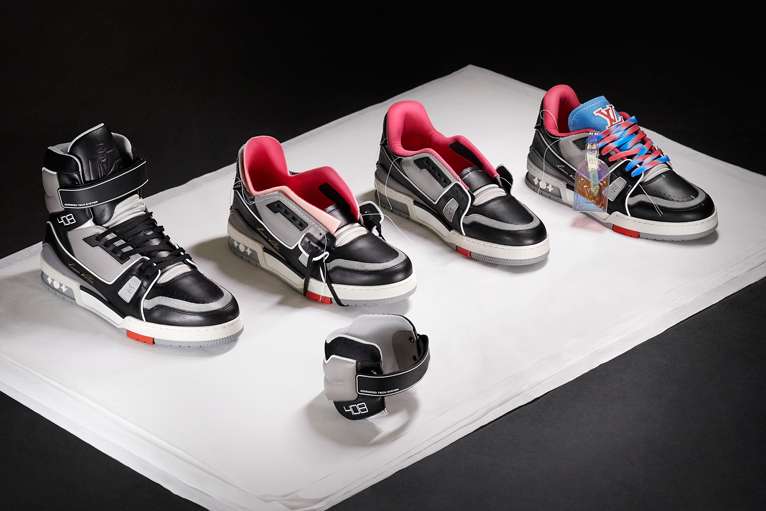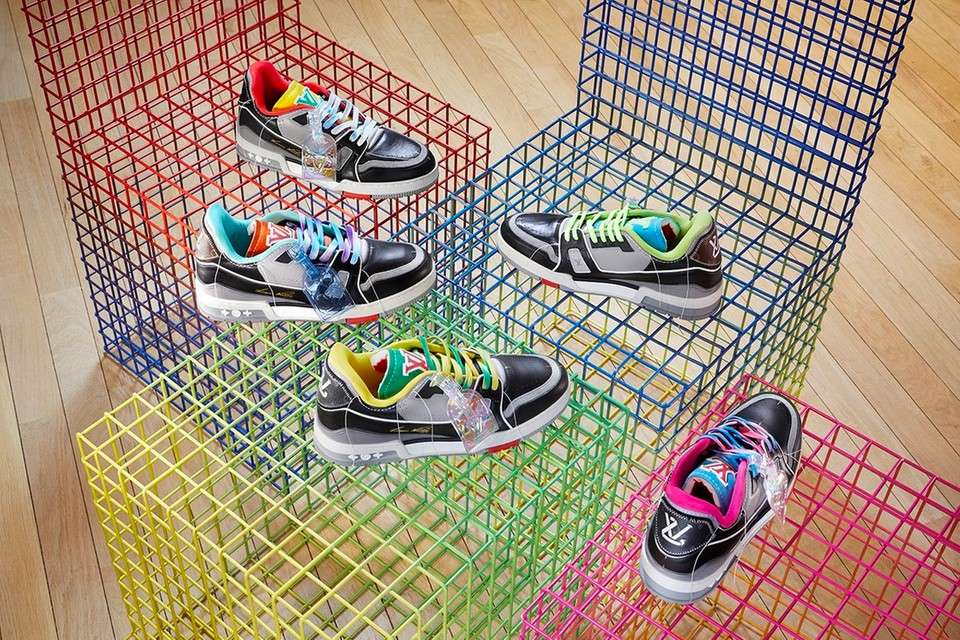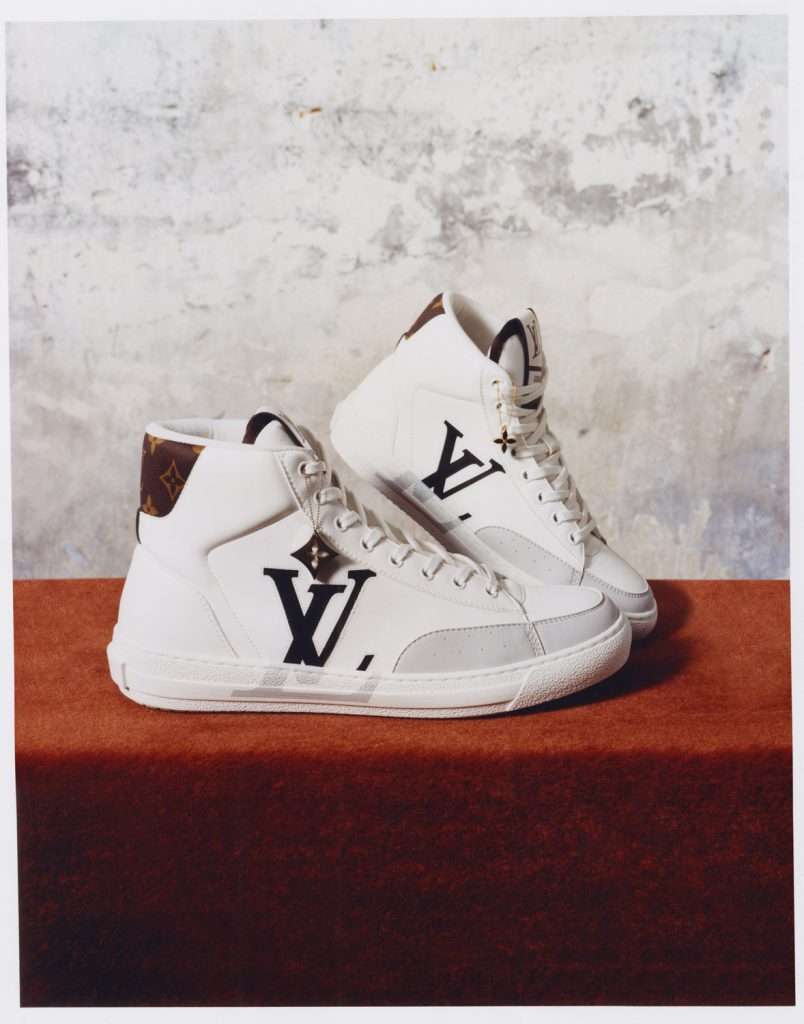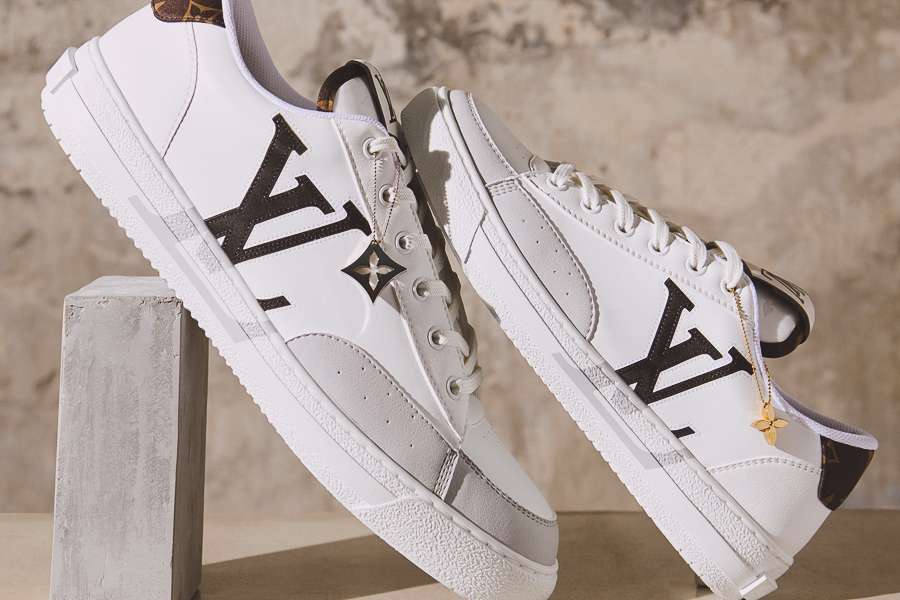Luxury fashion house Louis Vuitton has just launched its first unisex sneaker, and its most sustainable to date.
According to the French label Louis Vuitton, its new Charlie Sneaker is made from 90 percent recycled or bio-sourced materials. The launch comes after it launched the LV Trainer Upcycling men’s shoe earlier this year.
The launch announcement is part of its 2025 goals to switch to eco design processes, 100 percent responsibly sourced raw materials, and 100 percent renewable energy across production and logistics. It’s part of the parent company LVMH (Moët Hennessy Louis Vuitton) groupwide “Life 360” program, which has also worked with Bvlgari on its recent sustainability initiatives.

Responsibly Sourced Materials
By 2025, Vuitton aims to use 100 percent responsibly sourced raw materials; switch to 100 percent renewable energy in its production and logistics sites, and have all products comply with an eco-design process. This places the brand ahead of parent company LVMH Moët Hennessy Louis Vuitton’s groupwide “Life 360” program.
Christelle Capdupuy, global head of sustainability at Louis Vuitton, told WWD that the brand conducted life cycle analyses on five of its men’s shoes last year. The Charlie, she says, is a test model to help the brand move toward more sustainable design and development.
“This allowed us to identify the levers to reduce the environmental impact of our shoes, and the Charlie is the result of all this scientific, technical work that has been done,” Capdupuy told WWD.
Unlike other luxury labels, LV has been slow to embrace sustainable materials and practices. But the company says it is working to expand efforts. It released a sustainable development plan in 2020, titled “Our commitment journey,” which came after its first upcycled collection, Be Mindful, debuted in 2019.

Upcycling Signal Logo
The brand has also introduced a new logo, the Upcycling Signal Logo, aimed at orienting customers toward the brand’s sustainable products. Artistic director for men’s collections at Vuitton, Virgil Abloh, has championed the move. It’s now on Abloh’s spring 2021 collection. It’s also appearing on all products that are either upcycled, or made up of at least 50 percent of recycled or bio-sourced raw materials.
But it’s not just collections, says Capdupuy, it’s a fundamental shift for the brand.
“The objective is not to design capsule collections. The objective is to transform gradually all of our processes, all of our raw materials,” she told WWD. “It’s like a huge cargo freighter that is changing course.”
The brand is on target to meet its goals. By the end of last year, more than half of its raw materials were responsibly sourced.

The Charlie
The Charlie, which is made up of recycled polyester and corn-based plastic called Biopolioli, as well as recycled nylon, called Econyl, made from upcycled fishing nets, fabric scraps, and industrial plastic waste. Insoles and linings are made from recycled polyurethane and recycled polyester. The brand also redesigned its packaging. The shoebox, which is 100 percent recyclable, saves close to 70 percent of raw materials and also turns into a transport bag for the shoes.
“The Charlie is the result of a collaboration between marketing, the environmental division, our production site in Italy and our suppliers,” says Capdupuy. “It’s allowed us to test and source the most ambitious raw materials, in terms of environmental impact, and now we’re learning.”
Overstock and deadstock scraps figure prominently in Vuitton’s sustainable collections. One of Abloh’s touchstones is finding ways to recycle and reuse. It brought him both praise and criticism, like with a recent Nike collaboration.
“We ordered way more than the market was ready to adopt of a new design, so we had stock of those that hadn’t sold through initially. And I was like, instead of this being a negative, I immediately went into, ‘This is a great way for us, as a luxury house, to just think about the history of this shoe,’” Abloh told WWD.
“With that overstock, I’ve reinterpreted it, and I think that for us as a luxury house in terms of value, it doesn’t depreciate, no matter what. Especially in sneaker culture, if you see what’s happening on StockX, shoes trade for 10 times their value when they’re older. So there’s a lot of new things at play,” he added.
“Every luxury brand is using recycled and upcycled raw materials and it’s still something really luxurious, because it’s rare,” Capdupuy said. “Raw materials are rare, and everyone realizes that today. In fact, not using recycled raw materials would be a waste.”
The Charlie is set to launch in November.


